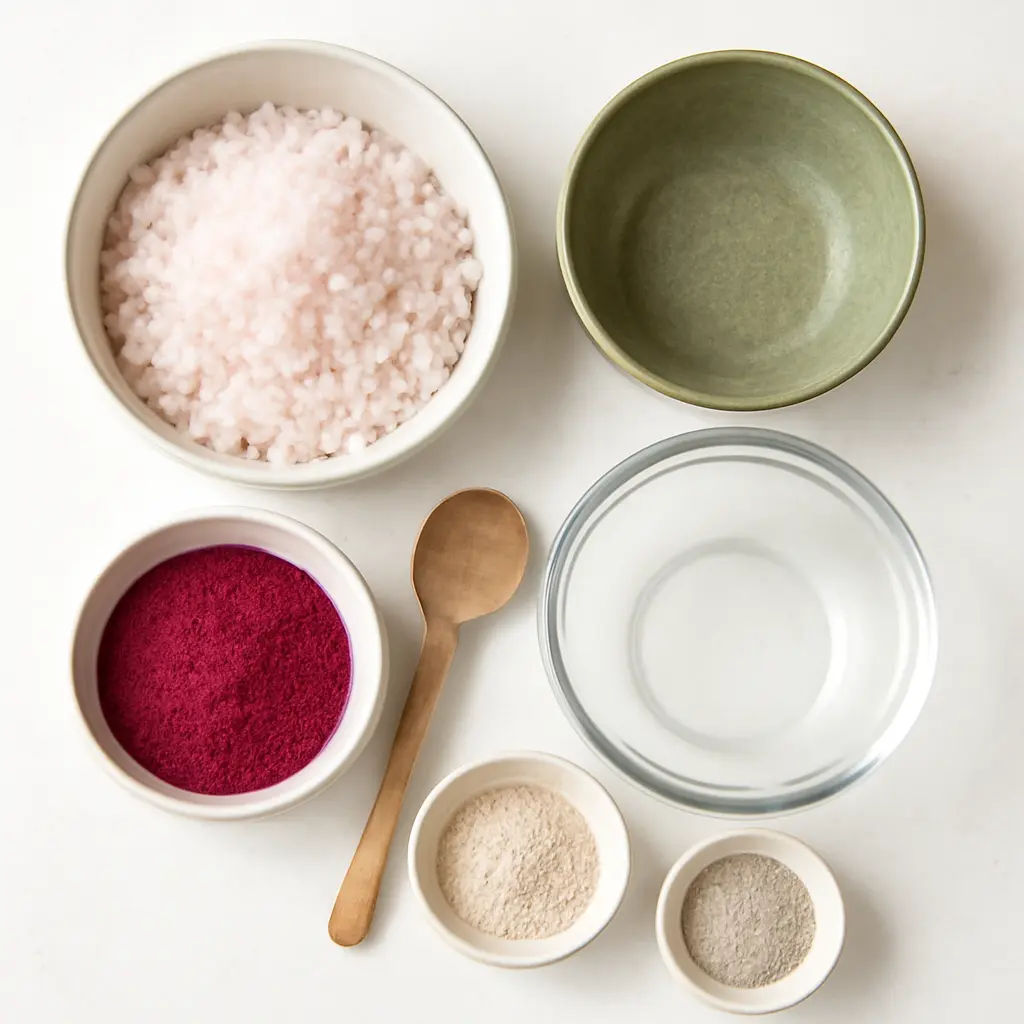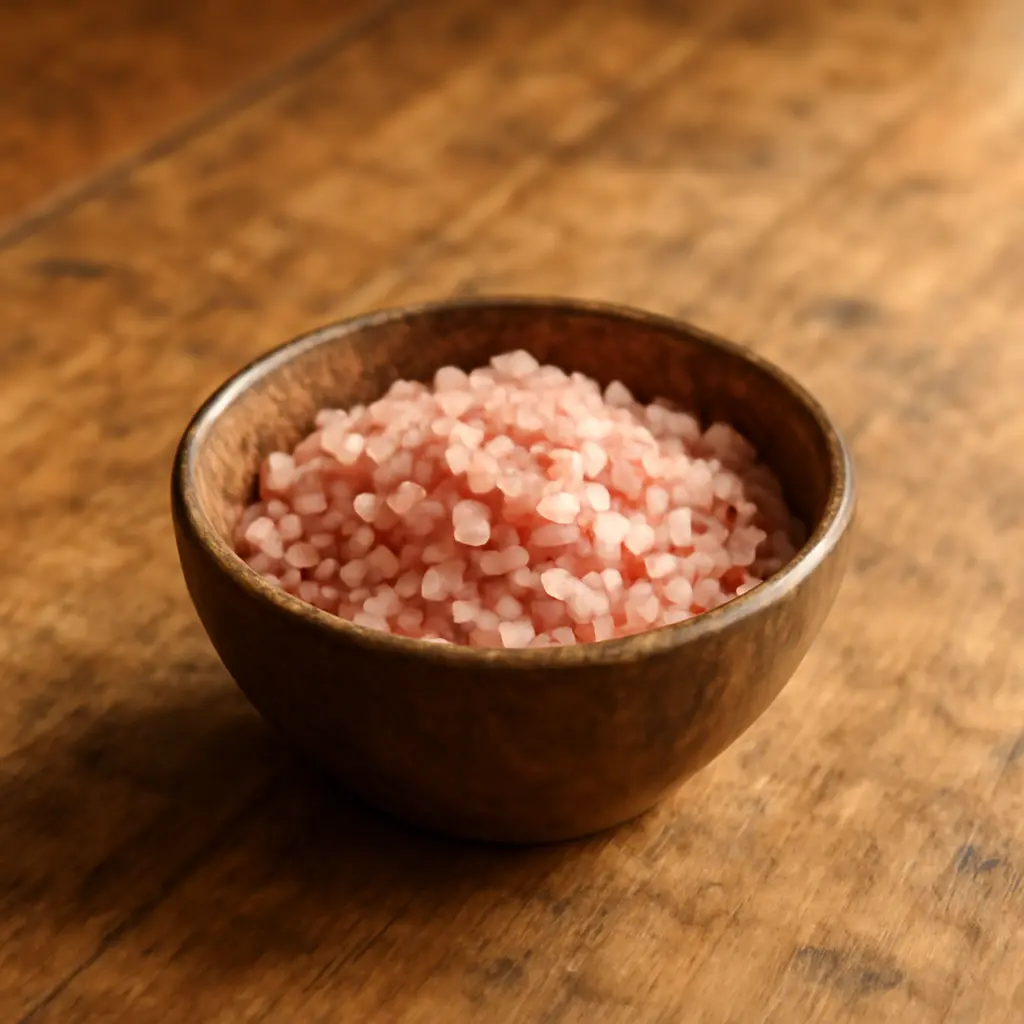Table of Contents
My Personal Story with Pink Salt Recipe
The first time I came across pink Himalayan salt, it completely transformed my cooking. I remember walking through a local market and spotting coarse, rosy crystals that looked unlike any salt I had seen before. My grandmother, who always had an eye for natural ingredients, encouraged me to try it, praising its mineral content and unique flavor. I was curious, and from the first sprinkle, I could tell this salt was different—it added a subtle depth and a pleasant earthiness to my dishes. Since then, pink salt has become a kitchen essential for me, whether I’m seasoning a simple salad or preparing a hearty stew. Cooking with my daughter Nouha, we often talk about the story behind this salt, making our kitchen time not only tasty but meaningful.
Pink salt connects us to nature in a way that processed table salt does not. It reminds me of the value of simple, wholesome ingredients that bring out the best in food without complicated processing or additives. This personal journey made me passionate about sharing pink salt recipes with others who want to add flavor and nutrition to their meals effortlessly.
Why Pink Salt Recipe Stands Out: Color, Minerals, and Uses
Pink Himalayan salt is treasured not only for its striking rosy color but also for the rich mix of trace minerals it contains. These minerals, including calcium, potassium, magnesium, and iron, give the salt its unique taste and potential health benefits. Unlike heavily processed table salt, which loses many minerals during refining and often contains additives like anti-caking agents and iodine, pink salt remains closer to its natural state.By undergoing minimal processing, it retains its natural minerals, making it a healthier and more natural option.
The color of pink salt can vary from light pink to deeper reddish hues, depending on the mineral content of the specific salt source. This variety adds a beautiful visual element when used as a finishing salt, sprinkled on salads, roasted vegetables, or grilled meats. Its flavor is milder and more complex than regular salt, often described as slightly sweet and earthy.
Apart from its use in cooking, pink salt is increasingly popular in health and wellness practices. It is used in salt lamps, bath salts, and spa treatments for its purported detoxifying and relaxing properties. More recently, recipes have gained popularity in health drinks and electrolyte waters, where the mineral content supports hydration and replenishment.
In everyday cooking, even a small pinch of pink salt can make a big difference. I often add it to recipes like my simple pancake recipe for two, where it balances sweetness and enhances the overall flavor in a subtle yet noticeable way.
Print
Pink Salt Recipe: How To Make And Use Pink Himalayan Salt Easily
- Total Time: 2-3 hours
- Yield: 1 cup 1x
- Diet: Gluten Free
Description
Learn how to make your own pink Himalayan salt blend with this easy recipe. The combination of natural coloring agents and mineral-rich ingredients makes for a deliciously unique addition to your meals and drinks. Perfect for enhancing flavor, hydration, and wellness!
Ingredients
1 cup coarse sea salt or kosher salt
1 tablespoon beetroot powder (optional for color)
1 tablespoon mineral-rich clay (optional for added minerals)
1–2 tablespoons of water
Instructions
1. Mix the sea salt with beetroot powder and mineral-rich clay in a bowl.
2. Add water a tablespoon at a time, until you achieve a uniform consistency.
3. Spread the mixture evenly on a baking sheet.
4. Dry the mixture in a low-temperature oven (150°F/65°C) for several hours, or air-dry overnight.
5. Once dried, break up clumps and store in an airtight container.
Notes
This recipe allows customization of the color and mineral content.
You can use different natural powders to change the hue or adjust the mineral profile.
Make sure to use food-safe ingredients when making your own blend.
- Prep Time: 15-20 mins
- Cook Time: 2-3 hours
- Category: Health & Wellness
- Cuisine: Fusion, Natural, Health-focused
Nutrition
- Serving Size: 1/4 teaspoon
- Calories: 0
- Sugar: 0
- Sodium: 600mg
- Fat: 0
- Saturated Fat: 0
- Unsaturated Fat: 0
- Trans Fat: 0
- Carbohydrates: 0
- Fiber: 0
- Protein: 0
- Cholesterol: 0
Easy Steps to Make Your Own Pink Salt Blend
While authentic pink Himalayan salt is mined from deep within the mountains of Pakistan, it’s possible to create a homemade version that captures the beautiful color and mineral benefits using natural ingredients. This approach allows you to customize your pink salt recipe based on personal preference for color, texture, and mineral content.
To start, use a coarse salt such as sea salt or kosher salt as your base. These salts have a rough texture and neutral flavor that works well with additives. Next, add natural coloring agents like beetroot powder, which imparts a mild earthiness and a vibrant pink hue, or mineral-rich cosmetic clays that provide trace minerals and a beautiful rosy tone. The amount of coloring agent can be adjusted, but a good starting point is about one tablespoon per cup of salt to create a balanced look without overpowering the flavor.
After mixing your ingredients thoroughly, spread the mixture thinly on a baking sheet lined with parchment paper. Dry the salt blend either in a low-temperature oven (around 150°F or 65°C) for several hours or leave it out to air dry overnight, depending on your preference and available time. Once dried, break up any clumps and store the salt in an airtight container to maintain freshness.
Making pink salt at home is a fun and satisfying project that allows you to know exactly what’s in your salt and avoid additives or preservatives common in store-bought versions.
Essential Tools and Ingredients Needed
For this pink salt recipe, you’ll need basic kitchen tools: a mixing bowl to combine ingredients, measuring spoons for accuracy, a baking sheet for drying, and airtight containers for storage. For texture, choose a coarse salt such as sea salt or kosher salt as your base.
Natural coloring agents such as food-grade beetroot powder, Himalayan mineral powder, or cosmetic-grade clays can be sourced online or at specialty food stores. It’s important to confirm the powders are food-safe before use.
Combine the ingredients thoroughly to achieve a uniform blend of color and minerals. After drying, you can use a fine mesh sieve to remove lumps and achieve a consistent grain size.
If you appreciate simple recipes made with wholesome ingredients, you might enjoy my simple pancake recipe for two, where a pinch of pink salt adds a subtle flavor boost.

Using Pink Salt Recipe: Ratios, Recipes, and Health Benefits
What Is the Right Ratio of Pink Himalayan Salt to Water?
When preparing a homemade hydration drink using pink Himalayan salt, getting the salt-to-water ratio right is important for both taste and effectiveness. A common and effective recipe calls for roughly 1/4 teaspoon of pink salt per liter (4 cups) of clean, filtered water. This ratio replenishes essential minerals without overloading your body with sodium.
You can enhance this drink by adding fresh lemon juice or a small amount of natural sweetener like honey or maple syrup, which not only improves flavor but also provides additional electrolytes and antioxidants. Drinking this mildly salted water helps restore electrolyte balance, which is especially important during and after exercise, hot weather, or illness.
It’s crucial to use pure pink Himalayan salt and filtered water to avoid contaminants. Also, moderation is key—too much salt can negatively affect blood pressure.This beverage works best when included as part of a well-rounded, healthy diet.
Health Benefits and Culinary Uses
Pink Himalayan salt contains several minerals, such as magnesium, potassium, and calcium, that support nerve function, muscle activity, and fluid balance in the body. Many people report improved digestion, reduced muscle cramps, and enhanced hydration after incorporating salt into their diets.
Scientifically, the minerals in pink salt help maintain electrolyte levels that regulate critical bodily functions. While more research is needed to fully understand all health benefits, many find pink salt drinks a helpful, natural way to support hydration.
In the kitchen, pink salt offers a nuanced flavor that differs from regular table salt due to its mineral content. It works well in seasoning blends, rubs, marinades, and as a finishing salt to add both flavor and visual appeal to dishes. Incorporating pink salt into your daily cooking is a simple way to naturally boost your mineral intake.
For example, my simple pancake recipe for two benefits from just a pinch of pink salt, which balances sweetness and enriches the flavor profile subtly.
The Science Behind Pink Salt: Composition and Differences
What Is Pink Salt Made Of? Understanding Its Mineral Composition
Pink Himalayan salt is primarily sodium chloride, the same basic compound found in regular table salt. However, what sets it apart is its high concentration of naturally occurring trace minerals—up to 84 different elements. These include important minerals such as calcium, potassium, magnesium, and iron oxide, which gives the salt its distinctive pink color.
These minerals contribute not only to the salt’s unique flavor but also to potential health benefits, including support for electrolyte balance, muscle function, and overall well-being. The salt is hand-mined from ancient sea beds deep within the Himalayan mountains, where it has remained relatively untouched by pollution, preserving its natural mineral content.
The exact mineral composition can vary depending on the specific location and mining process but generally provides a richer and more complex nutritional profile than highly refined table salt.
How Pink Salt Is Different from Regular Salt and Why It Makes a Difference
Conventional table salt usually goes through thorough refining that removes most of its natural minerals. During refining, additives such as anti-caking agents and iodine are added to enhance shelf life and prevent clumping. While these additives serve practical purposes, they also mean table salt lacks the broad spectrum of minerals present in pink Himalayan salt.
On the other hand, pink Himalayan salt undergoes minimal processing, preserving its natural minerals and remaining free of synthetic additives. This difference affects both taste and potential health impacts. The minerals in this recipe can help support hydration, electrolyte balance, and muscle function in ways regular salt cannot.
From a culinary perspective, pink salt provides a gentler, more nuanced flavor, often noted for its subtle sweetness and earthy undertones. It is popular as a finishing salt for dishes where its color and texture can also enhance presentation. Using pink Himalayan salt in your cooking or hydration routine is an easy way to enjoy a more natural, mineral-rich seasoning.
For example, a pinch of this salt in my simple pancake recipe for two adds subtle mineral depth, rounding out the flavor perfectly.

How to Make Pink Salt at Home?
You can make pink salt at home by combining coarse sea salt or kosher salt with natural coloring agents like beetroot powder or mineral-rich clay. Mix well and dry the salt before storing it in an airtight container. This homemade pink salt recipe adds color and minerals without artificial additives.
What Does Drinking Pink Salt Do to Your Body?
Drinking water mixed with pink Himalayan salt can help replenish electrolytes and improve hydration. The natural minerals in pink salt, such as magnesium and potassium, support bodily functions like muscle control and fluid balance. However, it’s important to consume in moderation.
What Is the Ratio of Pink Himalayan Salt to Water?
A common ratio is about 1/4 teaspoon of pink salt per liter (4 cups) of clean, filtered water. This creates a lightly mineralized drink that helps restore electrolytes and hydration without excess sodium.
What Is the Formulation of Pink Salt?
Pink salt mainly consists of sodium chloride but also includes a variety of trace minerals—such as calcium, potassium, magnesium, and iron oxide—that contribute to its unique pink hue.It is minimally processed, preserving these natural minerals.
Conclusion
pink salt a versatile ingredient that adds both beautiful color and valuable minerals to your cooking and hydration routines. Whether you’re making your own recipe at home or using it to enhance your meals and drinks, understanding its composition and benefits will help you make better choices. Try incorporating pink salt into your kitchen and enjoy the natural flavor and potential health perks it offers. For a simple recipe that benefits from pink salt’s unique qualities, check out my pinterest

